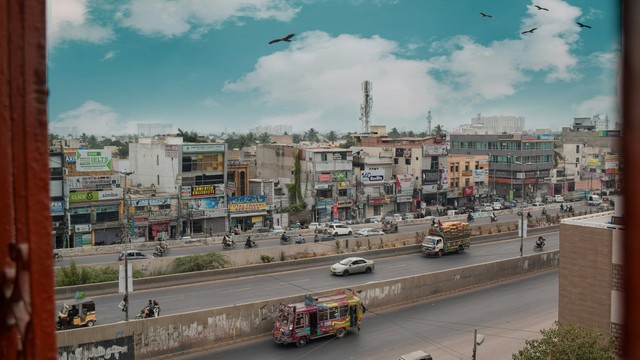Climate adaptation and good development: two sides of the same coin
Assessing how development interventions can help people cope with climate variability will help us prepare better measures for the effects of future climate change, say Simon Anderson and Fawad Khan.



Left: Women and schoolgirls discuss the benefits of harvesting rainwater (Credit: ISET). Right: A girl collects water from the rainwater storage tank (Copyright Fawad Khan)
Climate science shows that the effects of climate change will escalate over time. The world's most poor and vulnerable people who are already facing increasingly erratic rainfall and rising temperatures will find it most difficult to cope with these rising challenges.
Development projects can help people cope with current climatic variability. But, as the diagram below shows, unless development incorporates specific climate-adaptation measures, it will not be enough to address the hazards as climate change escalates. In some cases livelihood systems will become untenable and people will have to move or adopt less climate sensitive livelihoods.
 Policymakers and practitioners therefore need to better understand the relationships between climate adaptation and development. IIED and partners have developed a framework called Tracking Adaptation and Measuring Development (TAMD) to do just this.
Policymakers and practitioners therefore need to better understand the relationships between climate adaptation and development. IIED and partners have developed a framework called Tracking Adaptation and Measuring Development (TAMD) to do just this.
The TAMD initiative is taking varied approaches in Ethiopia, Kenya, Mozambique, Nepal, Cambodia and Pakistan to evaluate this relationship at local to national levels. In both Pakistan and Ethiopia, assessments are being made of how well development interventions enable people in remote areas to adapt to a more variable climate.
To do this, we are comparing evidence from communities where climate-relevant development projects are under way to that from communities without the development intervention but with the same climate challenges. We're also carrying out before and after comparisons. This approach allows what is called 'difference in difference' statistical analysis of the data on intervention effects.
Rainwater harvesting in Pakistan
In Kashmir, Pakistan — in collaboration with the Institute for Social and Environmental Transition, the Climate Change Division of the Pakistan Government and the Earthquake Rehabilitation and Recovery Authority — we asked households how the introduction of rainwater harvesting technology has benefited them.
They said women and girls spend now less time walking to collect water from distant sources, reducing their workload and leading to higher school enrolment and less absenteeism. Families have set up or expanded kitchen gardens and livestock rearing activities, increasing their incomes. They also report spending less money on healthcare as a result.
These are all good development benefits, but in the context of climate change, the families also have more water available to them even though the regional rainfall has become more variable.
Land management in Ethiopia
In Ethiopia, our partner Echnoserve is working with the Ministry of Agriculture – in particular its Sustainable Land Management Programme (SLMP) – to carry out the research into the benefits of development projects that aim to improve soil and watershed management.
These include investments in terracing, check dams and drainage ditches and the planting of grasses and trees to protect people and their assets from floods, whilst boosting crop and livestock productivity.
Although climate change is not what originally motivated the SLMP, the investments have helped people to adapt to more erratic and intense rainfall patterns by limiting the impacts of floods.
Development alone is not enough
In both countries then, communities are now better able to cope with climate variability thanks to these development projects. But the findings beg the questions: What will happen if rainfall becomes even more erratic or intense? How effective will these development interventions be then?
At what point will development interventions need to be complemented with adaptation interventions specific to increased climate hazards. Beyond that, at what point will more radical adaptation (adaptation that is longer sighted, further reaching) ensure development stays on track?
Much time has been spent — or wasted — debating what is effective adaptation, and what is good development. Through the TAMD initiative we are showing how they are linked, and that climate adaptation can grow out of good development projects that remove climate constraints to people's daily lives.
As climate change escalates, development will need to pay greater attention to adaptation, and planned adaptation will have to outpace the climate challenges to keep costs down and maximise the benefits. This approach stands a greater chance of success if it is based on what has been shown to work. Using evaluative frameworks such as TAMD helps us manage the uncertainty and plan ahead.
The project is funded by UK aid from the UK Government, however the views expressed do not necessarily reflect the views of the UK Government.



